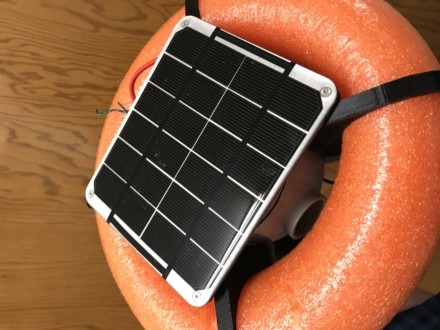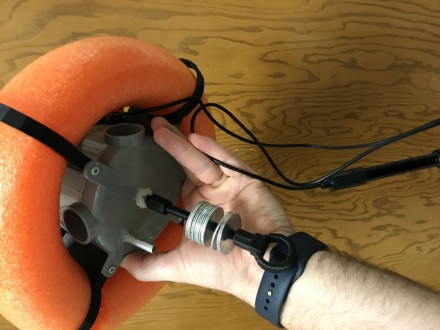
Water quality and the health of our aquatic environment is something we talk about a lot at our Environmental Education Centres. When the weather permits we are almost constantly at a pond, stream or river with classes. A typical program involves examining both biotic (living) and abiotic (non living) parts of the aquatic system. We catch and identify the living things and use tools like dissolved oxygen probes to explore the non living stuff.
The problem with our current approach is that each class represents a single point in time, it’s a tiny snapshot of what is really going on. We want our students to look at the big picture using real information from our locations. We needed a data logger that could measure water quality continuously and share it in a format that was accessible to the students.
It struck us one day that NOAA (the National Oceanic and Atmospheric Administration) uses buoy’s to collect similar types of information (only from the ocean). Why couldn’t we make our own, smaller versions? Hence, our Data Buoy Project. In a way, what we wanted was a weather station… but for a body of water like a pond, lake or river.
 We decided to go with a small development board called an Electron made by Particle. It is small cellular IoT board that has decent power management functions and is programmable ‘over the air’. By hooking this up with a 6V, 2W solar panel and a 2000MAH LIPO battery we have a simple platform that can run indefinitely (almost) that will push any data it collects directly to the web.
We decided to go with a small development board called an Electron made by Particle. It is small cellular IoT board that has decent power management functions and is programmable ‘over the air’. By hooking this up with a 6V, 2W solar panel and a 2000MAH LIPO battery we have a simple platform that can run indefinitely (almost) that will push any data it collects directly to the web.
We found that the electronics all fit nicely inside a round light receptacle designed for outside house wiring. It is  round (which is nice) and reasonably waterproof. A small 3D printed bracket holds the solar panel on top. Soon I will share the build process and details of the setup… just need the time to pull it all together.
round (which is nice) and reasonably waterproof. A small 3D printed bracket holds the solar panel on top. Soon I will share the build process and details of the setup… just need the time to pull it all together.
We programmed the Electron to determine the state of it’s battery, measure temperature, push to the web and then sleep for ten minutes. Our prototype buoy floated in a sea of grass beside Wrigley Corners for a few weeks so that we could make sure it worked.
On September 14, 2017 we deployed our prototype buoy at Golden pond to see if it would float!
On September 29th, 2017 I realized that the Dissolved Oxygen probe was not properly calibrated. The circuit default temperature was set to 0 degrees celsius. So I collected the buoy, fixed the problem and on October 2nd, 2017 redeployed the buoy.
It now floats, collects water quality data and sends us updates every twenty minutes!
Categories: Wrigley Corners